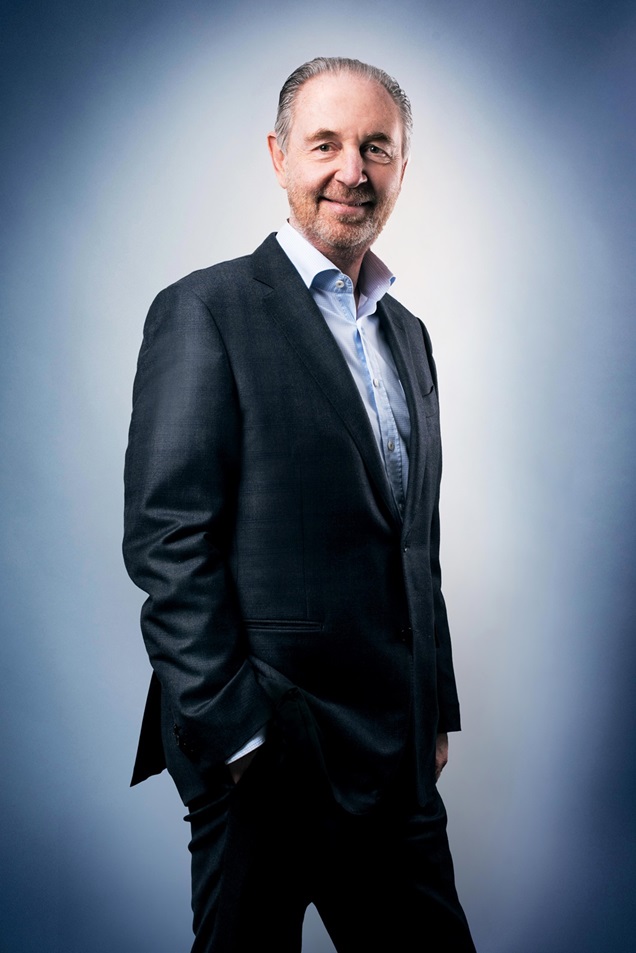Philippe Craninx, Moore Belgium: “This is Corporate Finance 4.0.”

• Philippe Craninx his role within Moore Belgium & Moore Global involves i.a. facilitating cross-border M&A activities globally, aiming for seamless, integrated approaches.
• Inspired by bridging theoretical knowledge with practical experience, Craninx emphasizes the importance of catering to medium-sized and family businesses, translating complex financial concepts into actionable strategies.
• Challenges in cross-border deals include cultural differences, regulatory variations, financing complexities, and managing diverse workforce structures, requiring multidisciplinary expertise and multifunctional teams.
Philippe Craninx has gained extensive experience in the field of corporate finance, starting at Unilever and then at Generale Bank, predecessor of BNP Paribas Fortis. In the late 1980s and early 1990s, he founded his own corporate finance boutique, which later merged with Moore in 2014. Since then, he has led Moore Belgium’s corporate finance team and also holds board positions within Moore Belgium and Moore Global.
“After the integration with Moore, I started to facilitate cross-border M&A activity within Moore Global”, Craninx explains. “In such a way that we can guide our customers in the different countries that matter with a seamless, one team approach. We have about fourteen countries that work really intensively together and who really have a strong corporate finance offering. The other countries Moore Global is active in, are integrated into this corporate finance team if and when their assistance is needed too. So my role is to make those connections.”
What led you to join Moore? Was it the international opportunities it offered for more cross-border activities?
Philippe Craninx: “The reason was to make the leap to Corporate Finance 4.0. The first dimension of corporate finance is simply the technical knowledge of the takeover field based upon the (at that time) newly developed insight in cost of capital, cash flow and actual value calculation. The second is knowledge about how to manage an M&A process. The third dimension is the international dimension. And the fourth dimension is the multidisciplinary dimension.
We had already introduced the international dimension as an independent corporate finance boutique. With the integration with Moore, we could take the step towards an integrated network i.e. the multidisciplinary dimension. You need that to deliver optimal assistance to your clients in today’s world, which is much more complex than it was 15 or 20 years ago. You can solve the various problems you encounter in an M&A transaction with experts, but there is a natural hurdle if they operate from a silo.”
What inspired you to focus your career on medium-sized and family businesses?
Philippe Craninx: “It’s perhaps a combination of who I am and the path I’ve taken. Essentially, my entire career has been built on many pillars. One of those pillars is translating the knowledge, the conceptual theoretical knowledge that was built up in the 1980s and 1990s about capital markets and M&A projects and that is still evolving, into the world of the average entrepreneur, the average family business, and the average management team in Belgium.
I’ll give you an example from the early days. During a very interesting Belgian-US transaction I was working on in the 1990’s it became clear the American buyer was calculating his bid price on elements we did not fully grasp. Specifically, the evolution of working capital over a period of time and its effect on net debt. We noticed a knowledge gap giving the buyer a competitive advantage at the detriment of our seller. By researching and then applying this knowledge, we were able to advise the client effectively.
This is just one example of the bridging function of the effective corporate finance advisor. It is my belief that very often newly developed financial knowhow is first integrated In professional M&A teams with the larger buyers and then seeps through to the mid-market. One of our roles is to capture this evolution and translate it to our market segment.”
Have there been any other important developments in the entire knowledge evolution of the field and how that has changed in the Belgian SME market?
Philippe Craninx: “There have been a number of them. Around the turn of the century, many insights emerged about how takeovers seemed to destroy value instead of creating it. A lot of conceptual thinking has gone into this mechanism. This research has translated into a number of tips on how you can either prevent this or manage the adverse effects of a takeover. After the banking crisis, risk assessment and management have become very important and led to new forms of acquisition finance. There are loads of those elements that play a role. In recent years for example, I have often advised on how to balance remuneration and decision power with the nature of funds provided both in M&A and growth situations. Setting this balance right might constitute competitive advantage when growing fast.”
When you look at those cross-border deals, what are the most important insights from the Belgian market?
Philippe Craninx: “Within Moore Corporate Finance, the mid-market is a very important target group in which we clearly distinguish ourselves from other parties in the market. When you say mid-market, you by definition say cross-border in many cases. Which is why we as Moore GCF (Global Corporate Finance) asked Vlerick Business School to do some study work on this. It is now five years that we have been collecting data and we have the right time lines for drawing conclusions from it. Some results: If you look at cross-border transactions, two-thirds are mid-market, so that is very significant. The average deal size in the mid-market has grown significantly to 47.4 million euros.
What we see very clearly now is that the Western European market has become relatively mature for cross-border deals. You see many companies that take a natural next step in their development by joining or taking over companies in their neighbouring countries. So, you see a very strong increase of these types of strategies. I’m going to take the Netherlands – Belgium as an example. A Dutch company buys into a Belgian company and continues its buy and build strategy from that launching platform having a perfect answer to deal with cross-border complexity after its first move. This is how you effectively create a regional champion.”
What are some of the major challenges in cross-border deals?
Philippe Craninx: “To begin with, the M&A process is a challenge in itself. There I come back to that multidisciplinarity in our Corporate Finance 4.0 reality. On top, we learned that preparing the post-acquisition phase is a must in the context of risk management. So the M&A profession in itself has a degree of difficulty.
If you go cross-border M&A, a number of things will be added. Cultural differences for one thing. A well-known example that I often mention is the difference between Dutch and Flemish. When a Dutch person says: ‘yes’ he means: I agree. When a Flemish person says ‘yes’, he means: ‘I understand what you are saying’. Which makes a world of difference. And this minor example is just between the Dutch and the Flemish. So cultural difference is really a complexity that should not be underestimated. And that is about word choice, about concepts, about how you deal with people, about hierarchy, and about how you generally achieve your goals, all those facets.
Additional challenges arise due to different regulatory frameworks and how you organise your cash flows. Despite some standardization within the European Union, variations exist. For instance, the Netherlands knows the concept of a fiscal unity, while Belgium does not. Both scenarios obviously impact the financing of acquisitions. As a consequence, a competitive acquisition finance will most probably be structured differently in one country compared to the other… and then comes the aspect of organising your funds flow between the two countries.
Employer-employee relationships as another example, can also vary greatly. Managing workflows becomes crucial, considering differences in structures such as the freelance world, which differs significantly between the Netherlands and Belgium. Ignoring these differences could lead to unexpected challenges.
Cross-border deals involve multiple layers of complexity, requiring not just multidisciplinary expertise, but also including the cross-border effect within your team. Building bridges is essential. At Moore Corporate Finance, we address this by effectively employing multidisciplinary teams in both the target and acquiring countries.”
You just mentioned post merger acquisitions as a significant challenge. How do you ensure post-acquisition success?
Philippe Craninx: “One of the things is to do a very good analysis before finalizing the transaction. What problems will you encounter after the transaction and how will you deal with them? And if you want to do that well, you need different disciplines. Everyone spontaneously thinks of the legal framework and about the M&A Reps & Warranties. Those are important, but a lot more is needed.
Bringing this insight is one of the things I meant by that bridge between the corporate finance education on the one hand and the real world on the other. The same goes for synergy. Very smart and highly educated M&A or PE consultants often have that pitfall: they make fantastic projections and can perfectly explain conceptually what should happen. But then it just doesn’t happen. Not because they were wrong, but because the people are not on board.”
How do you see the future of the corporate finance industry evolving?
Philippe Craninx: “That’s an exercise I’m currently fully engaged in. In that regard, I’ve explained what I understand by Corporate Finance 4.0, the four layers. In my experience, being a professional advisor is a continuous learning process. You have to be willing to reinvent yourself. The underlying elements remain the same. People are people, entrepreneurs create and build, families remain family. Regulations, taxation, the social environment – those factors change on a daily basis but won’t really change the nature of our profession. But for sure the profession in itself does change on the rhythm of technological evolution, political realities and new insights. For us to grasp and translate into the reality of our clients.”
What advice would you give to emerging professionals who want to succeed in the M&A / corporate finance sector?
Philippe Craninx: “You must be prepared to learn and gain experience throughout your life. Both in terms of the tools you use and in terms of human relationships. If you want to play the M&A game well, you always have to do it together with other specialists. You must be able to bring together many types of knowledge and talents. Finally, you must be able to bridge conflicting interests. So I think the most important thing is to be open-minded, creative and solution-oriented. Your most important role is to build a good compromise for the longer term and for the benefit of all stakeholders. So keep on developing yourself and keep on learning.”
What are some important lessons you’ve learned during your career in corporate finance, and how have they influenced your approach to leadership and decision-making?
Philippe Craninx: “There are plenty of lessons learned after so many years. Just to mention two of them. First: the power of repetition, understanding that just because you’ve said something twice or even more times, doesn’t mean the other party understood your message. Secondly: even if the person opposite you believes in what he is saying, it’s not necessarily true. This has to do with believing versus knowing real facts, sometimes with not knowing oneself completely. For example, someone can state that he wants to sell his business. But when you come up with a proposal, it becomes clear that person is not ready for it yet.”
Thank you Philippe for sharing your insights into the world of corporate finance and M&A!
Philippe Craninx: “You’re very welcome.”









